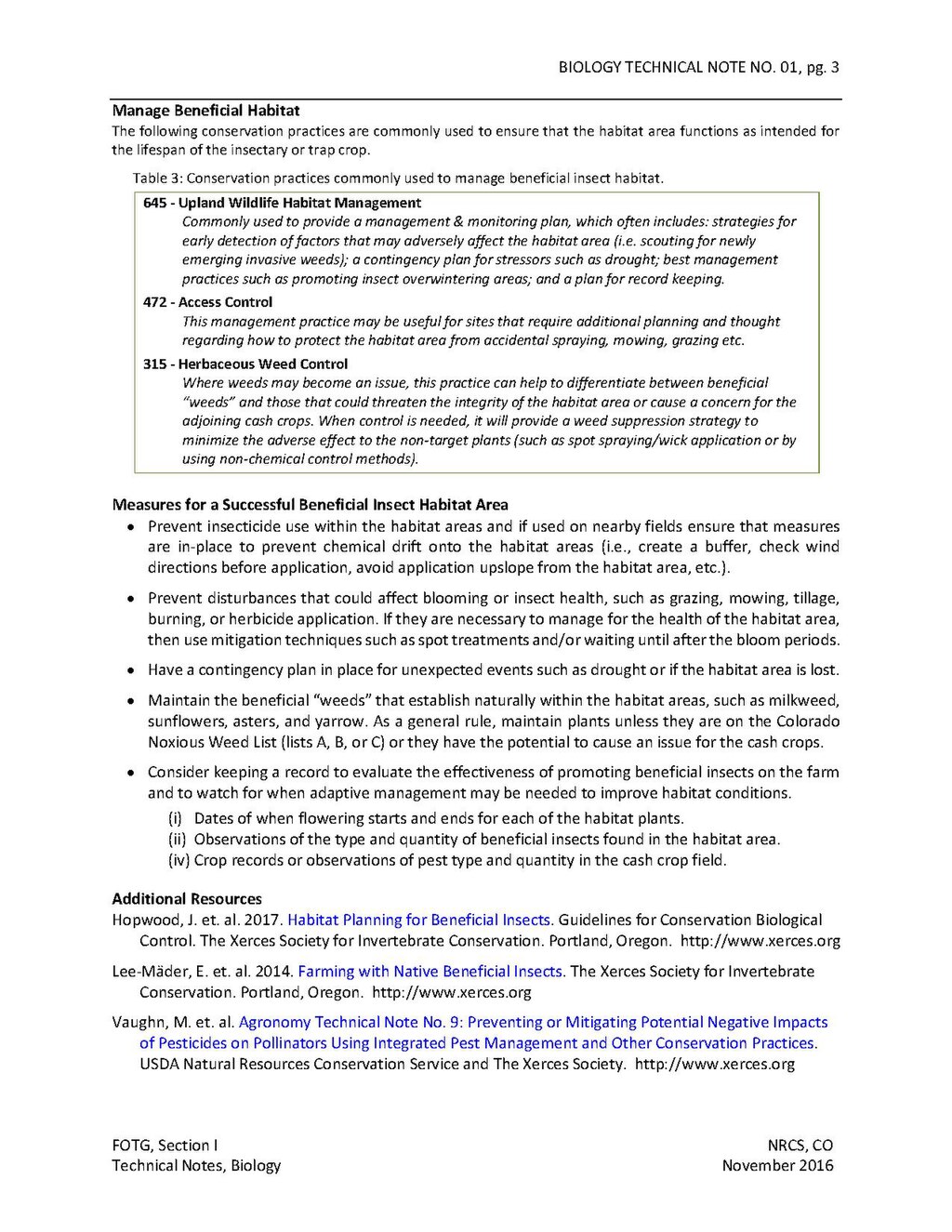Manage Beneficial Habitat
The following conservation practices are commonly used to ensure that the habitat area functions as intended for the lifespan of the insectary or trap crop.
Table 3: Conservation practices commonly used to manage beneficial insect habitat.
|
645 - Upland Wildlife Habitat Management
472 - Access Control
315 - Herbaceous Weed Control
|
Measures for a Successful Beneficial Insect Habitat Area
- Prevent insecticide use within the habitat areas and if used on nearby fields ensure that measures are in-place to prevent chemical drift onto the habitat areas (i.e., create a buffer, check wind directions before application, avoid application upslope from the habitat area, etc.).
- Prevent disturbances that could affect blooming or insect health, such as grazing, mowing, tillage, burning, or herbicide application. If they are necessary to manage for the health of the habitat area, then use mitigation techniques such as spot treatments and/or waiting until after the bloom periods.
- Have a contingency plan in place for unexpected events such as drought or if the habitat area is lost.
- Maintain the beneficial “weeds” that establish naturally within the habitat areas, such as milkweed, sunflowers, asters, and yarrow. As a general rule, maintain plants unless they are on the Colorado Noxious Weed List (lists A, B, or C) or they have the potential to cause an issue for the cash crops.
- Consider keeping a record to evaluate the effectiveness of promoting beneficial insects on the farm and to watch for when adaptive management may be needed to improve habitat conditions.
- (i) Dates of when flowering starts and ends for each of the habitat plants.
- (ii) Observations of the type and quantity of beneficial insects found in the habitat area.
- (iv) Crop records or observations of pest type and quantity in the cash crop field.
Additional Resources
Hopwood, J. et. al. 2017. Habitat Planning for Beneficial Insects. Guidelines for Conservation Biological Control. The Xerces Society for Invertebrate Conservation. Portland, Oregon. http://www.xerces.org
Lee-Mäder, E. et. al. 2014. Farming with Native Beneficial Insects. The Xerces Society for Invertebrate Conservation. Portland, Oregon. http://www.xerces.org
Vaughn, M. et. al. Agronomy Technical Note No. 9: Preventing or Mitigating Potential Negative Impacts of Pesticides on Pollinators Using Integrated Pest Management and Other Conservation Practices. USDA Natural Resources Conservation Service and The Xerces Society. http://www.xerces.org
